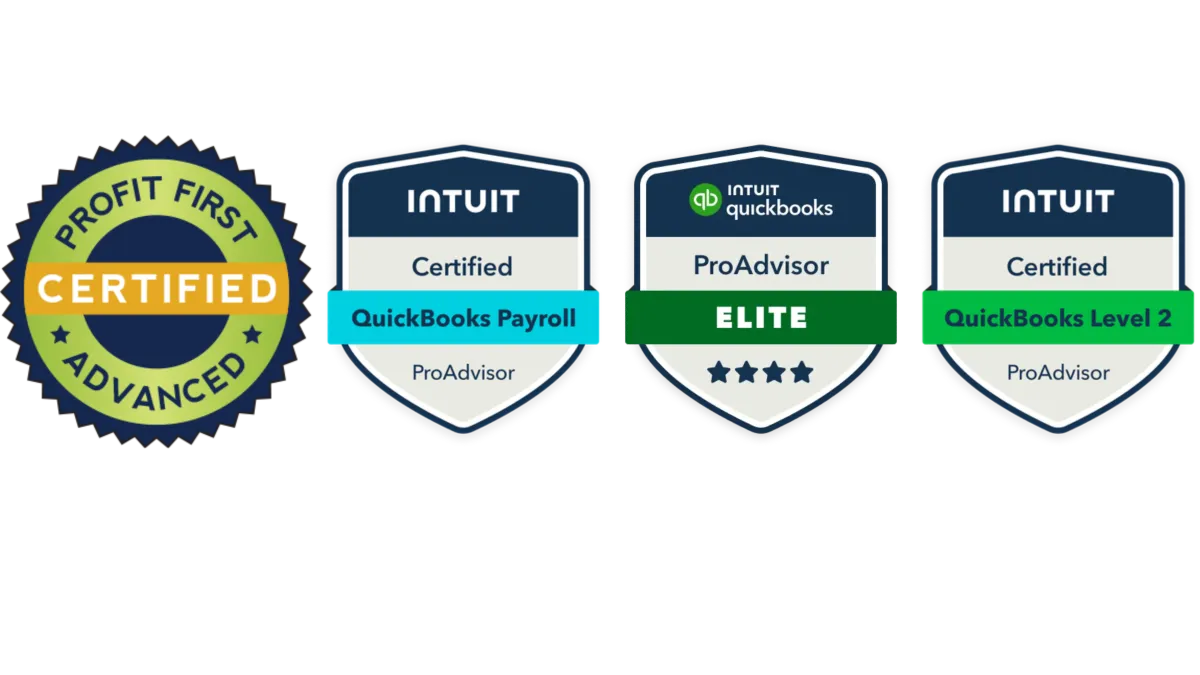Blog
Resources and Information to Help Your Business

What is the 360 Tax Planning Method?
The 360 Tax Planning Method: How
Blue-Collar Business Owners Can
Save Big in 2025
Introduction
Taxes can be overwhelming for blue-collar business owners. You already have enough on your plate—running day-to-day operations, managing crews, and keeping up with customer demands. The last thing you want is to lose money to avoidable taxes.
Unfortunately, many small business owners take a reactive approach to taxes, only thinking about them when it's time to file. This often results in missed opportunities for deductions, increased liability, and unnecessary stress. The 360 Tax Planning Method offers a proactive, year-round approach that not only helps you minimize your tax burden but also improves your overall financial health.
This guide breaks down everything you need to know about this strategy, including:
How the 360 Tax Planning Method works
Key tax-saving strategies tailored for blue-collar business owners
Practical steps to implement this approach and start saving in 2025
What is the 360 Tax Planning Method?
The 360 Tax Planning Method is more than just tax preparation; it’s a comprehensive, proactive approach that considers every aspect of your business to reduce your taxes throughout the year, not just during filing season.
Unlike the traditional “wait until tax season” mindset, this method emphasizes planning ahead and leveraging tax strategies before the year ends. Here’s what it includes:
1. Comprehensive Tax Assessment
The first step in the 360 Tax Planning Method is conducting a deep dive into your financials. This includes:
Reviewing your previous tax returns to uncover missed deductions or credits.
Analyzing your current income and expenses to identify areas for improvement.
Identifying potential risks that could lead to audits or penalties.
Example: After reviewing a contractor’s financials, we discovered they weren’t deducting expenses for specialized tools and safety equipment, which saved them over $5,000 in taxes.
2. Strategic Tax Deductions
Blue-collar businesses often have access to industry-specific deductions that can significantly reduce taxable income. Common deductions include:
Vehicle Expenses: Whether you’re using a personal vehicle for business or have a dedicated work truck, there are multiple ways to deduct these costs. You can choose between deducting actual vehicle expenses or using the standard mileage rate.
Tools and Equipment: From power tools to heavy machinery, these are considered business expenses and can often be fully deducted in the year they’re purchased.
Uniforms and Safety Gear: If your work requires specific clothing or protective gear, these costs may also be deductible.
Pro Tip: Don’t forget about Section 179 expensing, which allows you to deduct the full cost of certain equipment purchases upfront, rather than depreciating them over several years.
3. Entity Optimization
Choosing the right business structure is one of the most effective ways to reduce taxes. Depending on your income level, converting your LLC to an S-Corp may allow you to lower self-employment taxes by paying yourself a reasonable salary and distributing the rest as profit.
LLC vs. S-Corp: Many blue-collar business owners start as sole proprietors or LLCs, but as your business grows, it may be more tax-efficient to switch to an S-Corp.
Benefits of an S-Corp: By paying yourself a reasonable salary and taking the remaining profit as a distribution, you can avoid paying self-employment tax on the distribution portion.
Example: A plumbing business owner earning $150,000 switched from an LLC to an S-Corp and saved over $10,000 in self-employment taxes in the first year alone.
4. Retirement Planning Integration
Retirement plans are not only a great way to secure your future but also a powerful tax-saving tool. Contributions to certain retirement accounts are tax-deductible, meaning they reduce your taxable income for the year.
Solo 401(k): Ideal for self-employed individuals, allowing high contribution limits and the ability to contribute as both employer and employee.
SEP IRA: A simpler option with fewer administrative requirements but still offers significant tax benefits.
Pro Tip: If you have employees, consider offering a SIMPLE IRA or 401(k) plan, which can also help with employee retention.
5. Quarterly Reviews and Adjustments
Tax planning isn’t a one-and-done activity—it requires regular reviews to stay on track and take advantage of any mid-year changes in tax law. With quarterly check-ins, you can:
Adjust your estimated tax payments to avoid underpayment penalties.
Ensure you’re capturing all eligible deductions as new expenses arise.
Implement mid-year strategies, such as increasing retirement contributions or making charitable donations.
Example: During a mid-year review, we identified a construction business owner who qualified for a new tax credit. By acting before year-end, they saved $3,500.
Steps to Implement the 360 Tax Planning Method
Ready to start saving? Here’s how you can implement this approach in your business:
Step 1: Schedule a 360 Tax Assessment
This is the foundation of your tax strategy. A detailed assessment helps uncover immediate opportunities for savings and sets the stage for ongoing planning.
Step 2: Develop a Personalized Tax Plan
Based on your assessment, create a tailored tax plan that includes specific strategies, such as maximizing deductions, optimizing your business structure, and planning for retirement.
Step 3: Implement Strategies Throughout the Year
Rather than waiting until tax season, begin implementing strategies immediately. This might involve adjusting how you track expenses, setting up a retirement account, or switching your business entity.
Step 4: Conduct Quarterly Check-Ins
Make quarterly reviews part of your routine. This ensures you’re consistently on track and allows you to adjust your plan as needed.
Conclusion
The 360 Tax Planning Method is about more than just filing your taxes—it’s about proactive, year-round planning that puts money back in your pocket. By leveraging this approach, blue-collar business owners can reduce their tax burden, improve cash flow, and achieve greater financial stability.
Ready to take control of your taxes in 2025? Schedule your free 360 Tax Assessment today and let’s chart a course to greater financial freedom!
Partner With Us Today!
Schedule a 30 minute, no cost, no commitment consultation today. Let's see if it makes sense to work together.
DISCOVER the 10 BIGGEST Financial Mistakes Contractors Make and What You Can Do to Fix Them Today
2023 All Rights Reserved.



